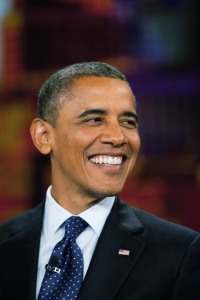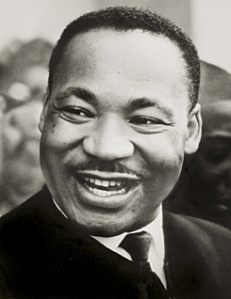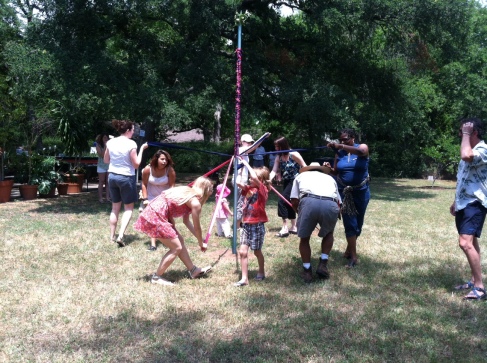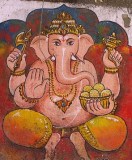
Ft. Kochi at sunset - until next time...
When our week in Fort Kochi was up, Emily and I reluctantly took the ferry back across the waterway to the train station and bid our sweet community goodbye. We had begun to feel like regulars in town, with people recognizing us on the street after seeing us in a store. We had found the most magnificent restaurant (called Oceanos, in case you find yourself in the neighborhood), and ended up going there almost every night (try the kerala red beans with pumpkin, or the okra coconut curry). Likewise, we found a sweet café a few doors down from our hotel and got to know the owner, Biju, after spending several mornings eating his wife’s and mother-in-law’s masala dosas while watching the pick-up cricket game in the field across the street. I expect we’ll be back someday.
Our next stop was Thrissur, about two hours north of Fort Kochi by train, and the hometown (or “native,” as they call it around here) of our dear teacher, Dr. Ramdas. His wife Lima met us at the train station and welcomed us into the house where Dr. Ramdas grew up and where his mother still lives – in fact, where he and Lima and their two children lived until three or four years ago when they came to Vaidyagrama. Their 2-year-old daughter, Rtu-parna, and 15-year-old son, Rithwick, are an integral part of the fabric of Vaidyagrama now.

Rithwick, his cousins, and Lima at a special birthday celebration dinner
Ostensibly we came to Thrissur for Pooram, an annual temple festival famous across India for its elaborate elephant procession; however, it was a joy for us just to be at Dr. Ramdas and Lima’s home in the midst of their family, which was gathering because of Pooram. Dr. Ramdas’s sister Radika and her husband were at the house, as were his niece and nephew from a different sister who couldn’t come. The nephew lives there full-time with Dr. Ramdas’s mother, which all adds up to a full house – and lots of incredible food. Radika and Lima are stupendous, mind-blowing chefs. It seemed we never stopped eating the whole time we were there – one meal would end and it would soon be time for another.
 Pooram itself is a day long festival in which two temples hold a friendly competition. Each sends an emissary of about twenty decorated elephants to the square in front of the town’s main temple. Each elephant wears elaborate head ornaments and has three men mounted on top: one carries fans made of peacock feathers, another swings batons with plumes of white fur, and the third holds a brightly colored umbrella high above the elephant’s back.
Pooram itself is a day long festival in which two temples hold a friendly competition. Each sends an emissary of about twenty decorated elephants to the square in front of the town’s main temple. Each elephant wears elaborate head ornaments and has three men mounted on top: one carries fans made of peacock feathers, another swings batons with plumes of white fur, and the third holds a brightly colored umbrella high above the elephant’s back.
 At the climax of the festival, the two lines of elephants face off across a huge field packed with over 100,000 people, and to the sound of mad drumming, the umbrellas from one line of elephants are taken down and replaced with umbrellas of a different pattern or color. The crowd cheers and then it’s the other side’s turn to show off a new set of umbrellas. This goes on for hours: umbrellas exchanged for new ones, drums pounding and people cheering. I am not sure if there is ever an official winner, but everyone plays the judge of which temple had the better umbrellas. (I am certain it was the devi temple.)
At the climax of the festival, the two lines of elephants face off across a huge field packed with over 100,000 people, and to the sound of mad drumming, the umbrellas from one line of elephants are taken down and replaced with umbrellas of a different pattern or color. The crowd cheers and then it’s the other side’s turn to show off a new set of umbrellas. This goes on for hours: umbrellas exchanged for new ones, drums pounding and people cheering. I am not sure if there is ever an official winner, but everyone plays the judge of which temple had the better umbrellas. (I am certain it was the devi temple.)
Our guidebooks warned that Thrissur Pooram has become an enormous affair which some men might use as an excuse to “get intoxicated and grope women in the crowd.” The crowd did take on a certain feverish pitch, with the trance-inducing drums and the surges of cheers. I just love the fact that two temples competing on the basis of elephant fashion, one could say, inspires such reckless abandon and drunken revelry. What a wonderful reason for a display of passion. Only in India.
Auspiciously perhaps, that same day we went with Dr. Ramdas to pick up the new car he and Lima recently purchased (a Chevrolet Spirit from “Gee-yem Motors,” as the dealership sign read). We made a motley crew: Dr. Ramdas with his brother-in-law, his 2 year old daughter, and two white girls from New Mexico. After the final papers had been signed, the salesman escorted us outside and arranged us all for a photograph in front of the car. Then, according to custom, he placed a lemon in front of each tire and we rolled over them on our way out of the lot. No one knew the reason or origin of the custom, but it seems meant to ensure an auspicious future for the vehicle.

ShreeLakshmi, Rtu, Emily, me and Lima in our finest
 The next morning we drove the car to the Guruvayur Temple, an important and enormous Krishna temple about an hour away, to hold a puja for the car. We awoke at 4 am in order to arrive at the temple by our 6 am appointment, and we all dressed up (Lima dressed Emily and me in her saris for the occasion). We stood outside the temple at sunrise as a priest conducted the ritual: he lit incense and chanted sacred words to invite safe and smooth travels, placed a garland of flowers across the car’s hood, dotted each window with sandalwood paste – and placed a lemon in front of each tire.
The next morning we drove the car to the Guruvayur Temple, an important and enormous Krishna temple about an hour away, to hold a puja for the car. We awoke at 4 am in order to arrive at the temple by our 6 am appointment, and we all dressed up (Lima dressed Emily and me in her saris for the occasion). We stood outside the temple at sunrise as a priest conducted the ritual: he lit incense and chanted sacred words to invite safe and smooth travels, placed a garland of flowers across the car’s hood, dotted each window with sandalwood paste – and placed a lemon in front of each tire.

The Dhanvantari temple
From there, we drove on to one of only two Dhanvantari temples in southern India. When Dr. Ramdas completed his training as an Ayurvedic doctor twenty years ago, he and one of his classmates came to this temple and slept there for 21 days, paying homage to the god of healing to whom they were devoting their life’s work, eating only the prasad that visitors to the temple brought. Although usually only Hindus are permitted inside, Dr. Ramdas intervened on our behalf and we were welcomed in. It was a powerful experience. A relatively small temple, it holds a quiet calm that is reassuring and comforting. The Dhanvantari idol enclosed in the center shrine is completely covered in butter, the traditional sacrificial offering at this temple. We made offerings of our own and pictured Dr. Ramdas’s 21-day pilgrimage. To imagine we were walking in his footsteps for even a few minutes was an inspiration. We felt initiated.
 The last day we were in Thrissur, we went to Lima’s parents’ home, about an hour away. We were excited in particular to see her mother, whom we had treated during our training a few months ago. She taught us how to make a traditional kerala dish, kind of a sandwich of sweet coconut meat in rice flour steamed in banana leaves. They live about two kilometers from the beach but apparently don’t go very often, so in our honor, we all piled in their small mini-van (along with some neighbor-relatives) and went. It was a beautiful beach, and Emily inspired Rithwick to go in up to his chest. The rest of us stayed at knee’s height and watched a beautiful sunset.
The last day we were in Thrissur, we went to Lima’s parents’ home, about an hour away. We were excited in particular to see her mother, whom we had treated during our training a few months ago. She taught us how to make a traditional kerala dish, kind of a sandwich of sweet coconut meat in rice flour steamed in banana leaves. They live about two kilometers from the beach but apparently don’t go very often, so in our honor, we all piled in their small mini-van (along with some neighbor-relatives) and went. It was a beautiful beach, and Emily inspired Rithwick to go in up to his chest. The rest of us stayed at knee’s height and watched a beautiful sunset.

We were sad to leave Thrissur’s warmth – and Lima’s incredible cooking – but after five days, it was time for yoga. We boarded the train and headed south to Trivandrum and took up residence at the Shivananda Yoga Ashram. Perched on a hilltop with enormous trees bearing brilliant red blossoms and dropping ripe mangoes (well, not the same trees), we felt like we had arrived in heaven. As a fellow yogi commented, “This place is like yoga Disneyland.” It really was. The rigorous schedule of meditation, yoga, and seva (mopping the floor, in my case) was a welcome dive into Spirit and heart, a good transition in advance of pancha karma. I stayed for ten days before heading back to Vaidyagrama on my own, with Emily to follow a week later.

This bathing suit is all the rage in south India.
On one of my last days there, the ashram planned a day trip to Kanyakumari, the very southern most tip of India – the place where the India Ocean, the Arabian Sea, and the Bay of Bengal come together. I had not expected to make it there this trip, so it was a true surprise treat to get to take a dip in those waters. We then waited several hours to get on a ferry out to the rock where Swami Vivekananda meditated for two days straight before deciding to come to Chicago for the world’s fair in 1893, at which he gave a riveting speech that effectively introduced yoga to the West. From the rock, I looked north towards this vast and complex country and counted my blessings once again.
*******
Someone had to remind me that this past weekend was Memorial Day in the States. Being so far away myself, I think of all the soldiers and civilians who have died far from their homes under our flag. I remember too the Army officer I met on the first leg of my flight to India (he got off in Atlanta). He said he was always embarrassed when people thanked him for his service, because he loves his job – “It’s the best job in the world.” I’m not sure which aspects he loves. I think of all those who have died in wars, and I hope that they have found peace. I am grateful for peace wherever we find it, and perhaps especially wherever we make it.
Upon reflection today, I realized that’s really why I’m in India, why I am studying Ayurveda – to learn to create peace.
Sarve bhavantu sukinah
Sarve santu niramayah
Sarve bhadrani pashyantu
Ma kashchid dukha bhagbhavet
May all be happy;
May all be free from disease;
May all see only the good in others;
May none suffer from sorrow.
~from Vaidyagrama’s daily prayers

Read Full Post »


















 Dhanvantari
Dhanvantari 